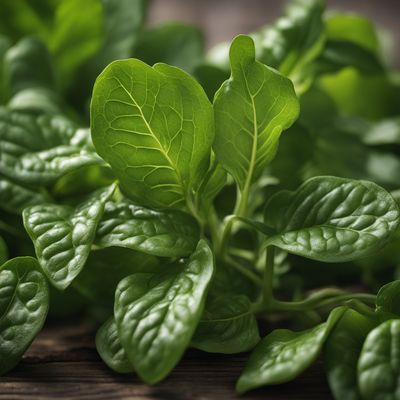
Ingredient
Water dock
The Aquatic Wonder: Exploring the Versatility of Water Dock
Water dock, also known as curly dock or yellow dock, is a perennial plant that grows in wet or marshy areas. It has long, slender leaves with curly edges and a distinct lemony or tangy flavor. The leaves are often used in salads, soups, or stir-fries, providing a refreshing and slightly tart taste. Water dock can also be pickled or blanched and used as a garnish.
Origins and history
Water dock is native to Europe and Asia but has naturalized in many parts of North America. It has a long history of culinary and medicinal use, dating back to ancient times. In traditional herbal medicine, water dock was believed to have various health benefits, including aiding digestion and detoxification. It was also used as a natural dye for fabrics. Today, water dock is primarily valued for its culinary applications and is commonly found in farmers markets or foraged in the wild.
Nutritional information
Water dock is a good source of vitamins A and C, as well as minerals like calcium and iron. It is low in calories and fat, making it a nutritious addition to salads and other dishes. A 1-cup serving of water dock provides approximately 20 calories, 2 grams of fiber, and 2 grams of protein.
Allergens
There are no known allergens associated with water dock.
How to select
When selecting water dock, look for fresh, vibrant leaves without any signs of wilting or discoloration. The leaves should have a crisp texture and a bright green color. Avoid water dock with yellow or brown spots, as this indicates age or spoilage. If foraging for water dock in the wild, make sure to gather it from clean, unpolluted areas.
Storage recommendations
To keep water dock fresh, store it in the refrigerator in a plastic bag or container lined with a damp paper towel. It can stay fresh for up to a week if properly stored. Before using, rinse the leaves thoroughly under cold water to remove any dirt or debris. Trim off any tough stems or damaged leaves before incorporating them into your dishes.
How to produce
Water dock can be easily grown in a backyard garden or even in containers. It thrives in moist soil and prefers partial shade. Sow the seeds in early spring or late summer, and keep the soil consistently moist. Harvest the leaves when they are young and tender for the best flavor and texture.
Preparation tips
Water dock leaves can be used raw in salads, providing a tangy and refreshing element. They can also be blanched or sautéed briefly to soften their texture and mellow out their flavor. Water dock pairs well with citrus, vinegar, or creamy dressings. It can be added to soups, stews, or stir-fries for an extra burst of flavor. Pickled water dock can be used as a condiment or added to sandwiches or wraps for a tangy kick.
Culinary uses
Water dock is commonly used in salads, soups, and stir-fries. Its tangy flavor adds a refreshing element to dishes and pairs well with other vegetables, seafood, or poultry. In some regions, water dock is used as a substitute for spinach or other leafy greens in recipes. It can also be pickled and used as a garnish or added to sandwiches for a tangy twist.
Availability
Water dock is commonly available in Europe, North America, and Asia. It can be found in farmers markets, specialty grocery stores, or foraged in the wild in suitable regions.

